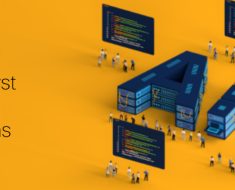In the relentless march of technological progress, one goal towers above all others: Artificial General Intelligence (AGI). It’s the stuff of both dreams and nightmares, the subject of heated debates in Silicon Valley boardrooms and philosophy departments alike. But while everyone seems to have an opinion on AGI, few can agree on what it actually means – or how close we are to achieving it.
At its core, AGI represents the holy grail of artificial intelligence research: machines that can match or exceed human cognitive abilities across various tasks. Unlike the narrow AI we interact with daily – think chatbots or image recognition software – AGI would be capable of learning, reasoning, and adapting to new situations just like humans. It’s the difference between a calculator that can crunch numbers and a robot that can write a sonnet, solve a crime, and then cook you dinner.
As we venture deeper into this uncharted territory, one question looms large: Are we on the brink of creating true machine intelligence, or are we chasing a digital mirage? The answer may reshape not just our technology but our very understanding of intelligence itself.
In this blog post, we’ll explore the fascinating journey towards AGI, examining its historical roots, current state, and what its development of AGI might mean for humanity.
From Science Fiction to Science Fact: The Evolution of AGI
The concept of AGI didn’t spring fully formed from a computer scientist’s keyboard. Its roots stretch back to the very dawn of computing, intertwining with humanity’s age-old fascination with creating artificial life.
In the 1950s, as the first electronic computers blinked to life, pioneers like Alan Turing were already pondering the possibility of machine intelligence. Turing’s famous test, proposing that a machine could be considered intelligent if it could convincingly converse with a human, laid the groundwork for AGI research.
The 1956 Dartmouth Conference, organized by John McCarthy, Marvin Minsky, Nathaniel Rochester, and Claude Shannon, marked the official birth of AI as a field. These visionaries dreamed big, aiming to create machines that could use language, form abstractions, and even improve themselves. In essence, they were describing AGI before the term was coined.
The following decades saw a rollercoaster of AI winters and springs. Expert systems of the 1970s and 80s showed promise in narrow domains but fell short of general intelligence. Neural networks, first conceptualized in the 1940s, experienced a renaissance in the 2010s with the rise of deep learning, bringing us closer to AGI-like capabilities.
Today, as large language models like GPT-4 demonstrate unprecedented versatility, we find ourselves at a new inflection point. These systems can engage in human-like dialogue, generate creative content, and solve complex problems across various domains. While they’re not true AGI, they represent a significant leap forward, blurring the lines between narrow AI and general intelligence.
The State of Play: Where We Stand on the Path to AGI
The quest for AGI has entered a new phase in recent years, with breakthroughs in machine learning pushing our understanding of what’s possible. While true AGI remains elusive, current AI systems are demonstrating capabilities that would have seemed like science fiction just a decade ago.
Large Language Models: The New Frontier
At the forefront of AGI research are large language models (LLMs) like GPT-4, PaLM, and Claude. These systems, trained on vast amounts of text data, can engage in human-like dialogue, generate creative content, and even perform complex reasoning tasks. While they’re not true AGI, their versatility and ability to “learn” from context have sparked debates about how close we are to achieving general intelligence.
Multi-Modal AI: Bridging the Gap
Recent advancements in multi-modal AI, which can process and generate different types of data (text, images, audio), represent another step towards AGI. Systems like DALL-E 2 and GPT-4 with vision capabilities are blurring the lines between different AI domains, mimicking the human ability to integrate information from various senses.
Reinforcement Learning: Teaching AI to Learn
Reinforcement learning, where AI agents learn through trial and error, has shown remarkable results in complex environments. DeepMind’s AlphaGo and its successors demonstrated superhuman performance in games, while more recent applications are tackling real-world problems in robotics and resource management.
The Emergence of Foundation Models
The concept of “foundation models” – large AI systems that can be adapted for a wide range of tasks – is gaining traction. These models, exemplified by systems like BERT and GPT, serve as a base for numerous applications, potentially offering a path to more general intelligence.
Challenges and Limitations
Despite these advancements, significant hurdles remain. Current AI systems still struggle with common-sense reasoning, causal understanding, and truly open-ended problem-solving. They also face issues of bias, hallucination (generating false information), and lack of true understanding.
Moreover, these systems are enormously computationally intensive, raising questions about scalability and environmental impact. The need for vast amounts of training data also presents ethical and practical challenges.
The gap between narrow AI and AGI is narrowing. However, bridging that final divide may require not just incremental improvements but fundamental breakthroughs in how we approach machine intelligence. The race to AGI is on, but the finish line remains tantalizingly out of reach – for now.
Navigating the Challenges: The Road to AGI
As we progress towards AGI, we face a complex landscape of technical hurdles and ethical dilemmas. On the technical front, key challenges include achieving true generalization across diverse fields, implementing common sense reasoning, and addressing questions of consciousness and self-awareness. Scalability and computational efficiency also remain significant obstacles.
Equally important are the ethical considerations surrounding AGI development. Ensuring AI alignment with human values is paramount, as is addressing issues of bias and fairness in AI systems. The potential economic impact, including job displacement, raises crucial questions about the future of work. Privacy and security concerns grow as AI systems become more powerful, and some researchers warn of potential existential risks posed by superintelligent AI.
The path forward requires not just scientific breakthroughs, but also careful consideration of societal implications. Robust governance frameworks and international cooperation are crucial to ensure responsible AGI development. Addressing these challenges demands interdisciplinary collaboration, bringing together experts from computer science, neuroscience, philosophy, ethics, and social sciences.
The Future Unfolds: Predicting the Impact of AGI
As we stand on the brink of potentially achieving AGI, speculation about its impact runs rampant. While precise predictions are challenging, experts agree that AGI could revolutionize nearly every aspect of human life.
AGI could accelerate scientific research and discovery at an unprecedented pace. From unraveling the mysteries of dark matter to finding cures for diseases, AGI’s ability to process and analyze vast amounts of data could lead to breakthroughs we can scarcely imagine.
The economic landscape may undergo a seismic shift. While concerns about job displacement are valid, AGI could also create new industries and roles we haven’t yet conceived. The nature of work itself might transform, with humans focusing more on creative and emotional tasks while AGI handles analytical and repetitive work.
Education could become hyper-personalized, with AGI tutors adapting to each student’s learning style and pace. This could democratize access to high-quality education globally, potentially reducing inequality.
In healthcare, AGI might enable real-time, personalized treatment plans, considering an individual’s entire medical history and genetic makeup. Predictive healthcare could prevent diseases before they manifest.
Environmental challenges could find new solutions, with AGI optimizing resource use and developing innovative technologies to combat climate change.
However, these potential benefits come with risks. The concentration of power in the hands of those who control AGI technology could exacerbate social inequalities. Privacy concerns could escalate as AGI systems process ever more personal data.
Ultimately, the impact of AGI will largely depend on how we choose to develop and deploy it. As we move forward, maintaining a balance between innovation and ethical considerations will be crucial in shaping a future where AGI enhances rather than diminishes human potential.



